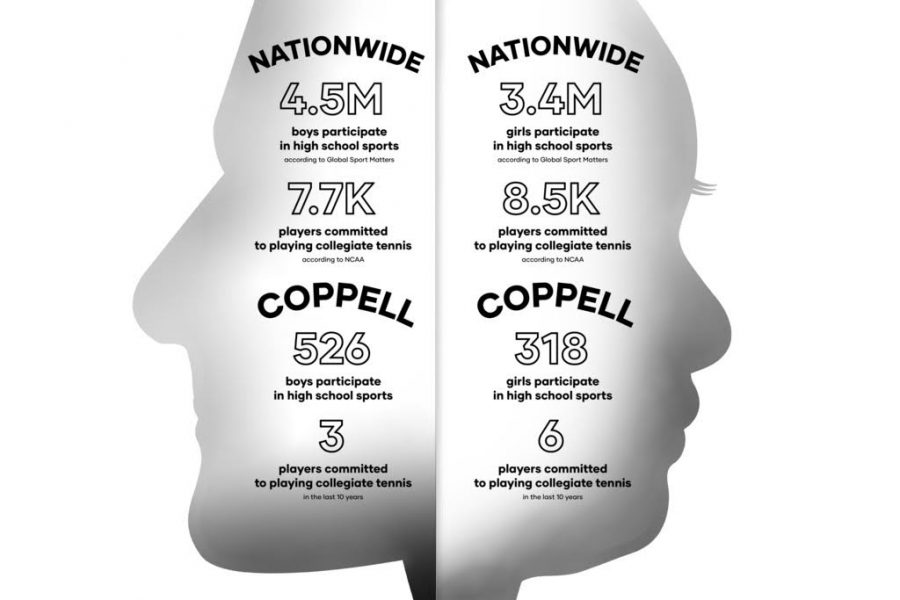Gender disparities creating more scholarship opportunities for female tennis players
The Coppell High School Tennis Program has had nine student athletes commit to play tennis in college over the past ten years. With six of the nine having been women, CHS Tennis Coach Rich Foster says this is due in part to the larger number of girls college tennis teams and greater amount of competition for male athletes. With more opportunities, women athletes receive more scholarship opportunities.
October 29, 2020
The Coppell High School Tennis Program has had nine student athletes commit to play tennis in college over the past ten years. With six of the nine having been women, CHS Tennis Coach Rich Foster says this is due in part to the larger number of girls college tennis teams and greater amount of competition for male athletes. With more opportunities, women athletes receive more scholarship opportunities.
“Early on it was mainly boys that were committing, but in the last couple of years, it’s been mainly girls, ” Foster said. “I assume because of Title IX and not as many girls playing tennis. There seem to be more scholarship opportunities for girls and many were willing to go to smaller schools, whereas most of our guys were not interested in that route.”
Title IX, passed in 1972, states “no person in the United States shall, on the basis of sex, be excluded from participation in, be denied the benefits of, or be subjected to discrimination under any education program or activity receiving Federal financial assistance.” In college athletics, this calls for equal opportunities for both male and female athletes to equal play, provisions and scholarships.
Many collegiate tennis programs have more women than men. University of Texas at Dallas with a Division III tennis program, currently has more women as well. According to Coppell High School 2020 graduate and UTD tennis commit Aishwarya Kannan, this is due in part to the amount of scholarship money available and keeping it equal between genders.
“Essentially schools [have] to offer an equitable amount of opportunities (scholarships) to males and females. ” Foster said. “As a result, some schools reduced the number of scholarships offered in some of the less prominent sports, or dropped the men’s teams altogether. In addition to many universities cutting or reducing men’s sports, many opportunities were added on the ladies side as well.”
It is a common goal amongst high school athletes to go to a big name university. According to Foster, many of Coppell’s female tennis players are willing to sign to smaller colleges, allowing them more commitment opportunities.
“There’s a trend among our students that they all seem to think they need to go to a big name school, and it’s very rare to have a high school tennis player that is strong enough to play at a [large university],” Foster said. “There are a lot of opportunities out there that go unused by some of our students who could go [to smaller schools]. There’s a mindsight of ‘I need to go to a big school’ from a lot of the kids.”
Athletes of both genders who sign college scholarships for their sport tend to have similar traits. One of these traits is consistency.
“You can be a really good tennis player, or really good at any sport, [but] if you were really good in ninth grade and you don’t keep working hard every day through your senior versus a person who was maybe not that good in ninth grade but they kept working – that person who was consistently working that whole time will end up outshining the person who laid back after they achieved a little bit of success their freshman year,” Coppell senior tennis player Sonia Bhattacharyya said.
Focusing on consistency, coachability, time and skill, can help student athletes receive scholarship offers.
“If you stop playing or you’re not committed for a month and come back, your form and stamina is going to go down,” Coppell junior tennis player Aryon Nath said. “If you’re going to play in college and be committed to tennis, then you might as well [have] a weekly or daily schedule to focus.”
Follow Torie Peck (@torielpeck) and @SidekickSports on Twitter.











